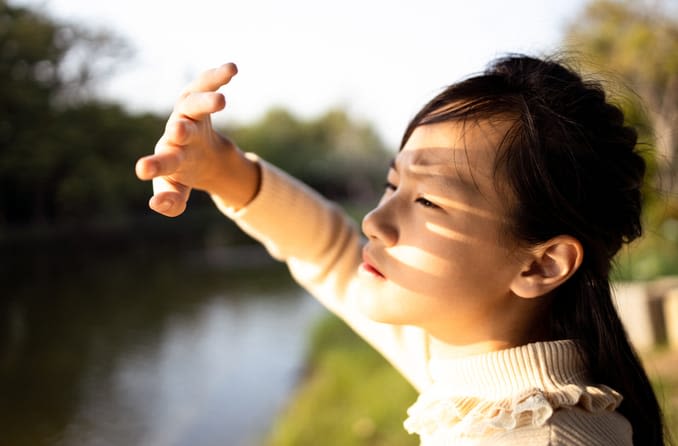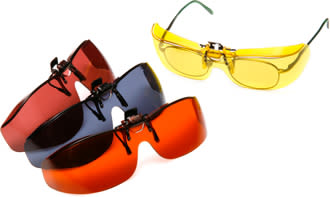Photophobia: Symptoms, causes and treatment of light sensitivity

Photophobia, or light sensitivity, is eye discomfort caused by light.
Sources such as sunlight, fluorescent light and LED lights can all cause discomfort, creating a need to squint or close your eyes. Headaches also may accompany light sensitivity.
Light-sensitive people sometimes are bothered only by very bright light. In extreme cases, however, any amount of light can be irritating.
What causes photophobia?
Photophobia is not an eye disease, but a symptom of many conditions such as infection or inflammation that can irritate the eyes.

Light-filtering shields are helpful if you are sensitive to sunlight or even strong indoor lighting. Shown are Cocoons Sidekick flip-up shields that are designed to work with prescription eyeglasses. They are available in five different colors, each with its own light transmission and glare reduction capability. Your eye care professional can recommend the best one for your needs.
Light sensitivity also can be a symptom of underlying diseases that don't directly affect the eyes, such as virus-caused illnesses or severe headaches or migraine.
People with a lighter eye colour also may experience more light sensitivity in environments such as bright sunlight, because lighter-coloured eyes contain less pigment to protect against harsh lighting.
Other common causes of photophobia include corneal abrasion, uveitis and a central nervous system disorder such as meningitis. Light sensitivity also is associated with a detached retina, contact lens irritations, sunburned eyes (photokeratitis or snow blindness) and refractive surgery.
Photophobia often accompanies albinism (lack of eye pigment), total colour deficiency (seeing only in shades of grey), botulism, rabies, mercury poisoning, conjunctivitis, keratitis and iritis.
Also, a variety of prescription and over-the-counter medications, including tetracycline and other antibiotics, anti-histamines and others drugs may cause light sensitivity as a side effect.
Photophobia treatment
The best treatment for light sensitivity is to address the underlying cause. Once the triggering factor is resolved or managed, photophobia disappears in many cases.
If you are taking a medication that causes light sensitivity, talk to your doctor about discontinuing or changing the medication.
If you're naturally sensitive to light, avoid bright sunlight and other harsh lighting sources. Wear wide-brimmed hats and sunglasses with ultraviolet (UV) protection when outdoors in daylight.
Also, consider wearing spectacles with photochromic lenses. These lenses darken automatically outdoors and also block 100 percent of the sun's UV rays.
In bright sunlight, wear polarised sunglasses. These lenses provide extra protection against reflected-light glare from water, sand, snow, wet roadways and other reflective surfaces.
If you are very sensitive to light, you might even want to consider wearing prosthetic contact lenses that are specially coloured to look like your own eyes and also reduce the amount of light that enters your eyes to reduce or prevent photophobia.
Page published on Monday, 16 March 2020






